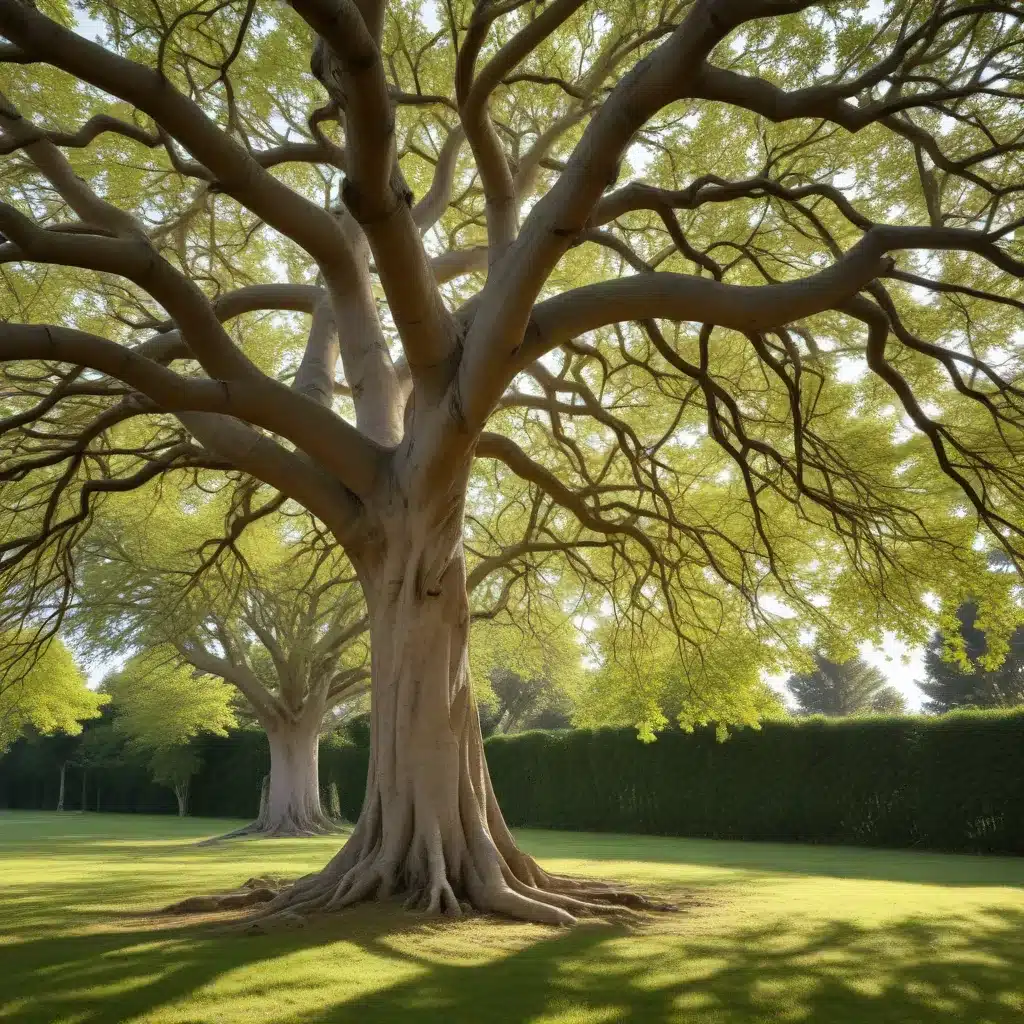
Unique and Unexpected Tree Varieties
As the field of arboriculture continues to evolve, tree care professionals are increasingly drawn to the rich diversity of tree species beyond the ubiquitous mainstays of landscape design. While familiar options like oaks, maples, and crape myrtles have their place, the world of botany offers a treasure trove of rare, endangered, and adaptable tree varieties that can elevate any landscape project. At TriCounty Tree Care, we believe that embracing this diversity not only expands the creative possibilities for designers but also contributes to the long-term health and resilience of our urban and suburban forests.
One such example is the Wollemi Pine, a “living fossil” tree species discovered in a remote Australian canyon in 1994. Thought to be extinct for millions of years, this ancient conifer with its distinctive, ridged bark and sprawling, almost prehistoric silhouette is now being carefully cultivated and introduced to landscapes around the world. Its adaptability to a range of climates and its striking visual impact make it a remarkable choice for those seeking to infuse their designs with a sense of mystery and wonder.
Similarly, the Ginkgo biloba, or Maidenhair tree, is a fascinating living link to the distant past. This hardy, deciduous tree, with its distinctive fan-shaped leaves and golden autumn display, has endured for over 200 million years, earning it the title of “living fossil.” Its resilience and unique aesthetic make it a compelling addition to parks, streetscapes, and private gardens.
In the tropics, the Baobab tree (Adansonia spp.) stands out with its massive, bulbous trunk and sparse, almost sculptural branches. These drought-adapted giants, found in Africa and Madagascar, are revered for their longevity, their ecological significance, and their striking silhouettes that can transform any landscape.
Expanding Design Horizons
Incorporating these and other unusual tree species into design projects can open up a world of creative possibilities. By moving beyond the familiar, designers can craft landscapes that are not only visually striking but also ecologically diverse and resilient.
One approach is to highlight the unique forms and textures of unconventional trees. The contorted, twisting branches of the Twisted Willow (Salix matsudana ‘Tortuosa’) or the layered, tiered canopy of the Japanese Umbrella Pine (Sciadopitys verticillata) can add visual interest and sculptural elements to a design. These trees, when strategically placed, can become focal points that draw the eye and evoke a sense of wonder.
Blending indigenous and exotic tree species can also create captivating design narratives. For example, pairing a majestic Bur Oak (Quercus macrocarpa) with the delicate, lacy foliage of a Japanese Maple (Acer palmatum) can juxtapose the familiar with the foreign, inviting observers to explore the nuances of each tree’s origins and characteristics.
Ecological Considerations in Tree Selection
As tree care professionals, we understand that the selection of tree species must go beyond aesthetic considerations. Ensuring the long-term health and sustainability of our urban forests requires a deep understanding of ecological factors and responsible sourcing practices.
Sustainable Sourcing Practices
When incorporating rare or endangered tree species into a design, it is essential to work with reputable nurseries and suppliers that adhere to sustainable forestry principles. At TriCounty Tree Care, we prioritize partnerships with growers who practice regenerative forestry, ensuring that the trees we source are not contributing to the depletion of natural habitats.
Climate-Resilient Tree Species
In the face of a changing climate, the selection of tree species that are adapted to local conditions is crucial. Drought-tolerant trees like the Afghan Pine (Pinus eldarica) or the Chinese Pistache (Pistacia chinensis) can thrive in regions plagued by water scarcity, while cold-hardy varieties such as the Manchurian Fir (Abies holophylla) or the Amur Maple (Acer ginnala) can withstand harsh winters.
Aesthetic and Functional Benefits of Tree Diversity
The incorporation of unique and unexpected tree species into landscape design can yield a host of aesthetic and functional benefits that extend far beyond the visual appeal.
Biophilic Design Elements
The tactile qualities, diverse foliage, and seasonal changes of lesser-known tree species can add layers of biophilic design to a project. The shaggy, peeling bark of the River Birch (Betula nigra) or the intricate, lacy leaves of the Japanese Lace Maple (Acer palmatum var. dissectum) can captivate the senses and foster a deeper connection between people and the natural world.
Ecosystem Services of Tree Plantings
Beyond their aesthetic merits, diverse tree plantings can also provide significant ecosystem services. The broad, dense canopy of a Bald Cypress (Taxodium distichum) can help mitigate urban heat island effects, while the fibrous roots of the Swamp Chestnut Oak (Quercus michauxii) can aid in stormwater management and erosion control.
Challenges and Innovations in Working with Diverse Tree Species
Incorporating rare and unconventional tree species into landscape design is not without its challenges. However, through specialized techniques and a dedication to ongoing research, tree care professionals can overcome these obstacles and unlock the full potential of diverse arboreal populations.
Propagation and Cultivation Techniques
Many rare and endangered tree species require specialized propagation and cultivation methods to ensure their successful establishment and long-term survival. At TriCounty Tree Care, our team of arborists and horticulturists stays up-to-date on the latest advancements in areas such as micropropagation, seed collection, and the management of unique microclimatic requirements.
Design Integration and Maintenance
Integrating diverse tree species into a cohesive landscape design also requires careful planning and ongoing maintenance. Considerations such as site-specific placement, pruning regimes, and the unique nutritional and watering needs of each species must be addressed to ensure the health and longevity of the plantings.
By embracing the rich diversity of tree species and leveraging the latest innovations in arboriculture, landscape designers can craft landscapes that are not only visually striking but also environmentally sustainable and resilient. At TriCounty Tree Care, we are committed to empowering designers to branch out beyond boundaries and explore the limitless possibilities of the botanical world.


